Jesse R. Pisel
A recommender system for automatic picking of subsurface formation tops
Feb 17, 2022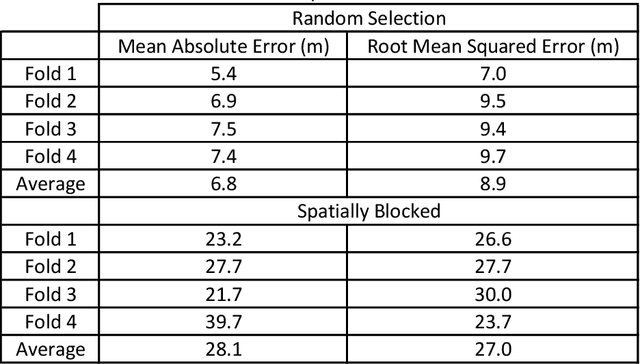
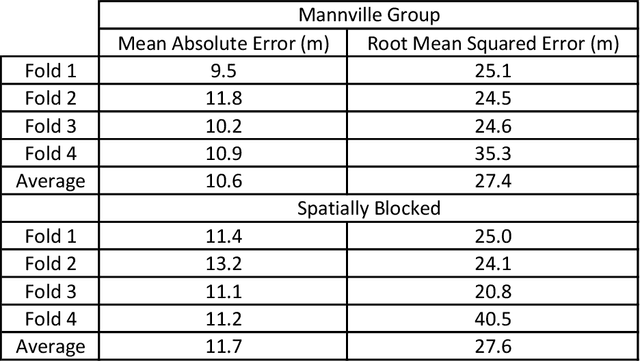
Abstract:Geoscience domain experts traditionally correlate formation tops in the subsurface using geophysical well logs (known as well-log correlation) by-hand. Based on individual well log interpretation and well-to-well comparisons, these correlations are done in the context of depositional models within a stratigraphic framework. Recently, many researchers have focused on automatic well-log correlation using a variety of warping algorithms that measure well similarity, and both unsupervised and supervised machine learning methods that assign categorical labels based on known tops in many other wells. These methods require a standardized suite of digital well logs (i.e. gamma ray logs for every well) along with the depth to the top of the formations, which might not be available in many cases. Herein, we propose a method that does not use geophysical well logs for correlation, but rather uses already picked tops in multiple wells to recommend the depth to the remaining unpicked tops in the wells. This recommender system calculates the depth to all formation tops in all the wells for two different datasets in two different basins. The Teapot Dome dataset is composed of lithostratigraphic formation tops, and the Mannville Group dataset is composed of sequence-stratigraphic (representing multiple lithologic groups within a stratigraphic unit) formation tops. For the demonstration, mean absolute error and root mean squared error of four-fold cross-validation compares the recommender system predictions to the ground truth human interpretations. The recommender system is competitive and often outperforms state of the art spline interpolation methods. Lastly, increasing the size of the training dataset decreases the prediction error, and that variance in error decreases with increasing formation tops picked in each formation and well for the lithostratigraphic top picks.
Automatic Feature Highlighting in Noisy RES Data With CycleGAN
Aug 25, 2021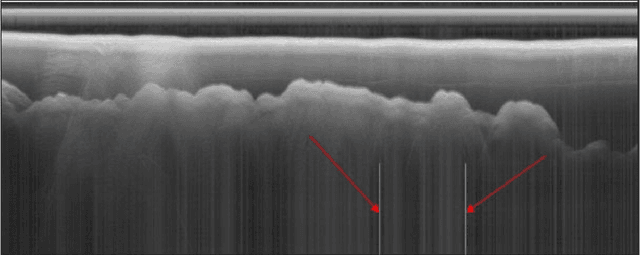
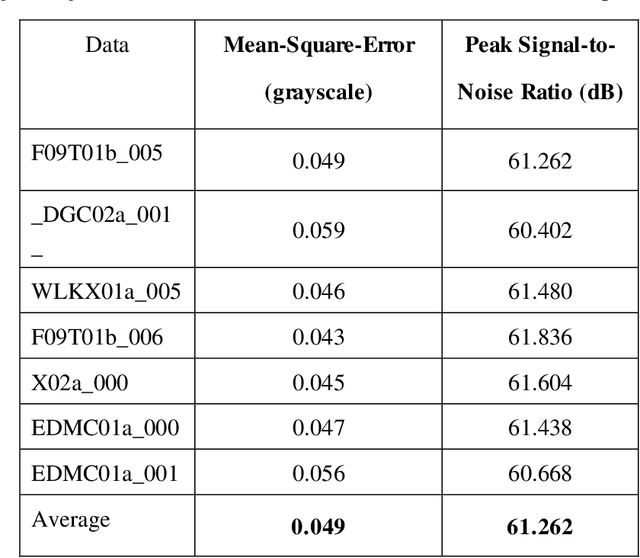
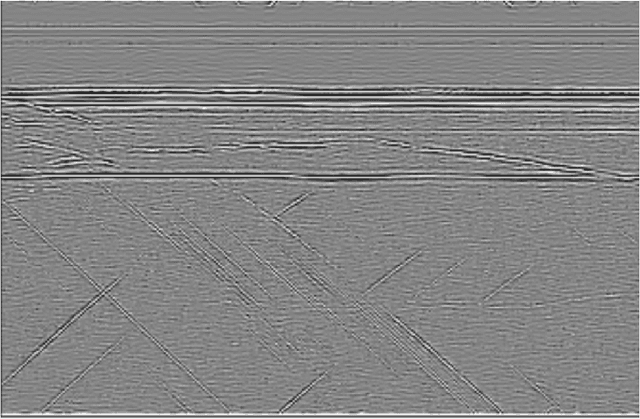
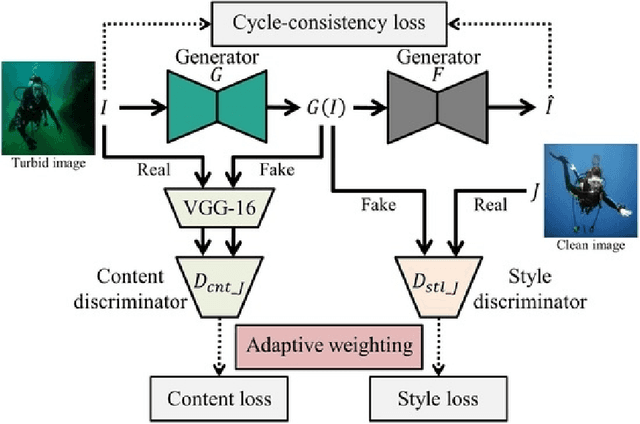
Abstract:Radio echo sounding (RES) is a common technique used in subsurface glacial imaging, which provides insight into the underlying rock and ice. However, systematic noise is introduced into the data during collection, complicating interpretation of the results. Researchers most often use a combination of manual interpretation and filtering techniques to denoise data; however, these processes are time intensive and inconsistent. Fully Convolutional Networks have been proposed as an automated alternative to identify layer boundaries in radargrams. However, they require high-quality manually processed training data and struggle to interpolate data in noisy samples (Varshney et al. 2020). Herein, the authors propose a GAN based model to interpolate layer boundaries through noise and highlight layers in two-dimensional glacial RES data. In real-world noisy images, filtering often results in loss of data such that interpolating layer boundaries is nearly impossible. Furthermore, traditional machine learning approaches are not suited to this task because of the lack of paired data, so we employ an unpaired image-to-image translation model. For this model, we create a synthetic dataset to represent the domain of images with clear, highlighted layers and use an existing real-world RES dataset as our noisy domain. We implement a CycleGAN trained on these two domains to highlight layers in noisy images that can interpolate effectively without significant loss of structure or fidelity. Though the current implementation is not a perfect solution, the model clearly highlights layers in noisy data and allows researchers to determine layer size and position without mathematical filtering, manual processing, or ground-truth images for training. This is significant because clean images generated by our model enable subsurface researchers to determine glacial layer thickness more efficiently.
Optimal Placement of Public Electric Vehicle Charging Stations Using Deep Reinforcement Learning
Aug 17, 2021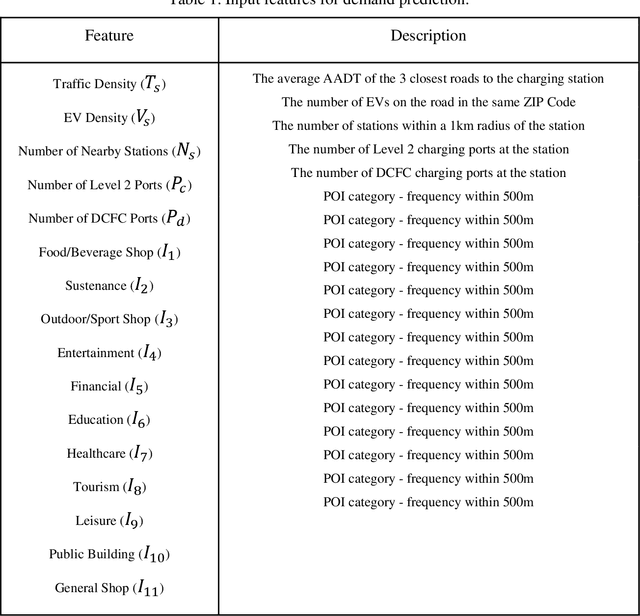
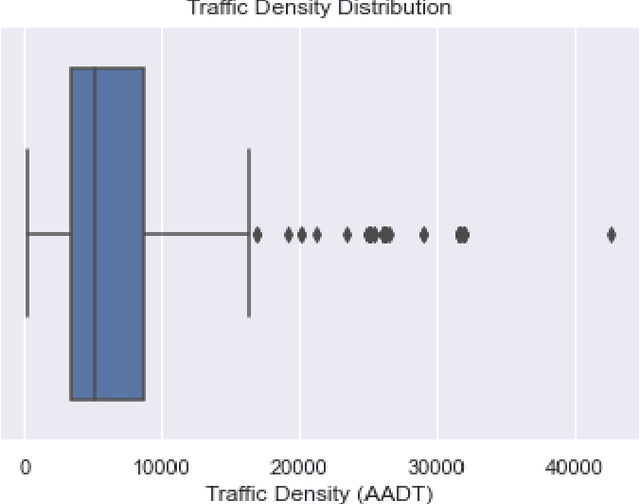
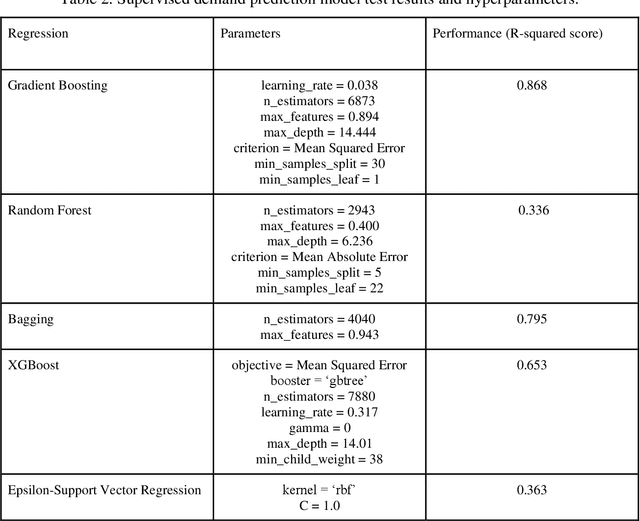
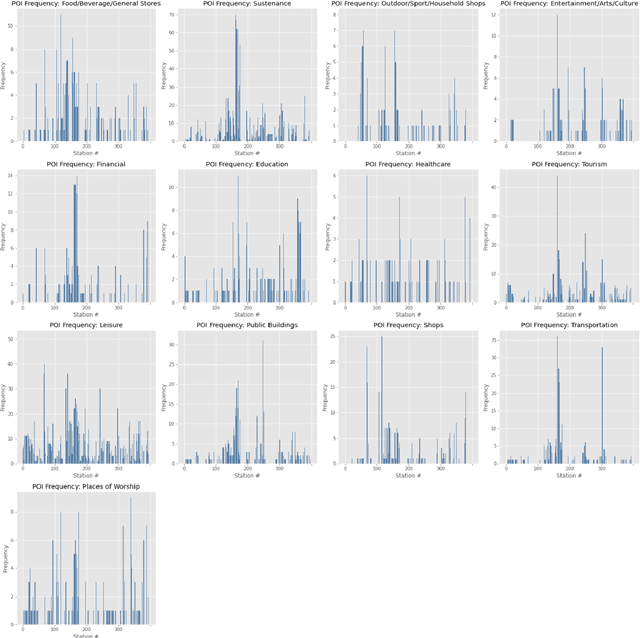
Abstract:The placement of charging stations in areas with developing charging infrastructure is a critical component of the future success of electric vehicles (EVs). In Albany County in New York, the expected rise in the EV population requires additional charging stations to maintain a sufficient level of efficiency across the charging infrastructure. A novel application of Reinforcement Learning (RL) is able to find optimal locations for new charging stations given the predicted charging demand and current charging locations. The most important factors that influence charging demand prediction include the conterminous traffic density, EV registrations, and proximity to certain types of public buildings. The proposed RL framework can be refined and applied to cities across the world to optimize charging station placement.
 Add to Chrome
Add to Chrome Add to Firefox
Add to Firefox Add to Edge
Add to Edge